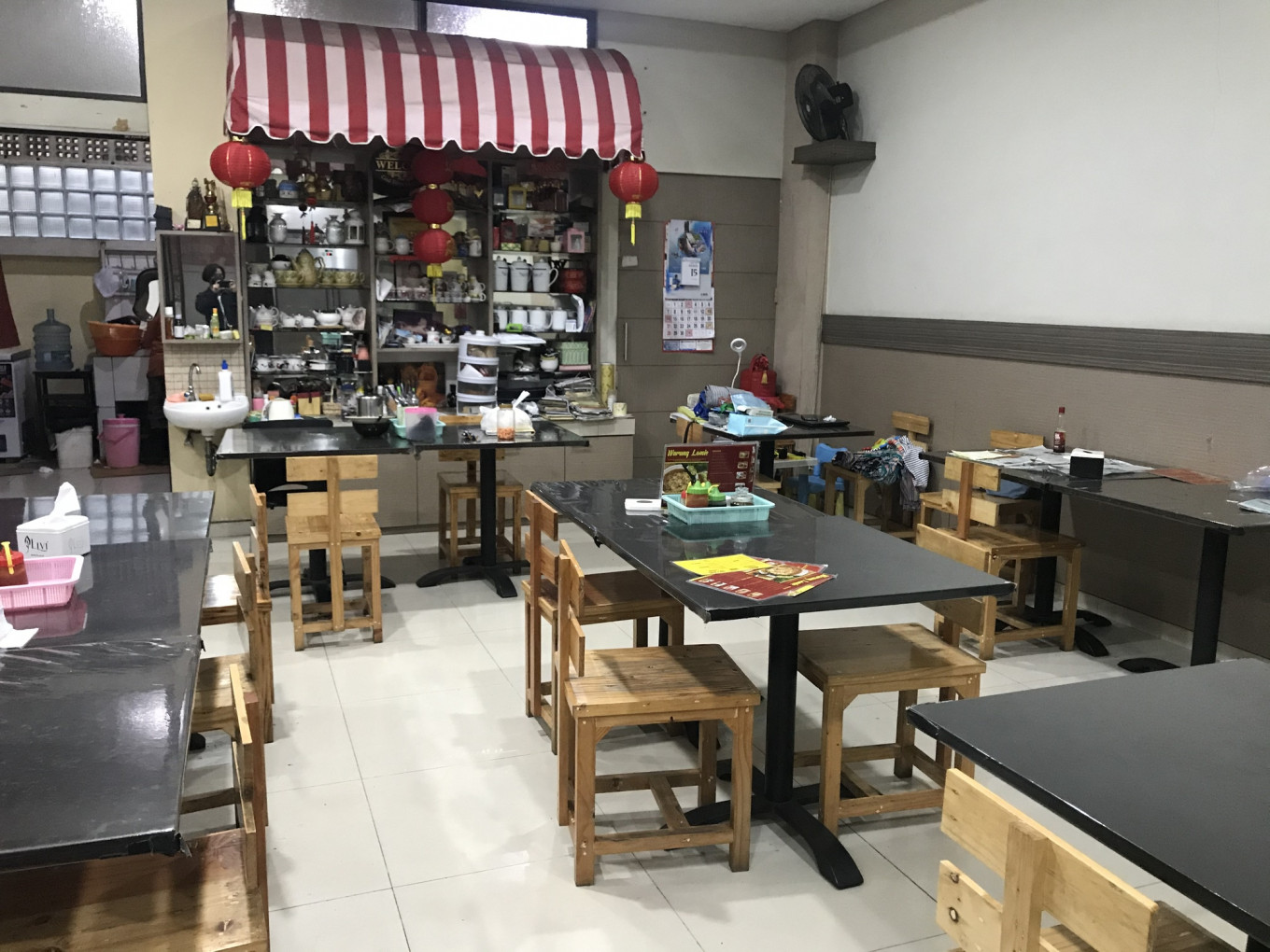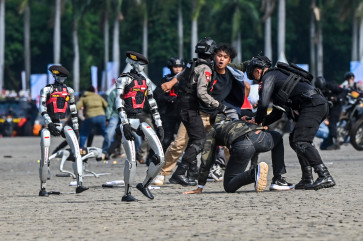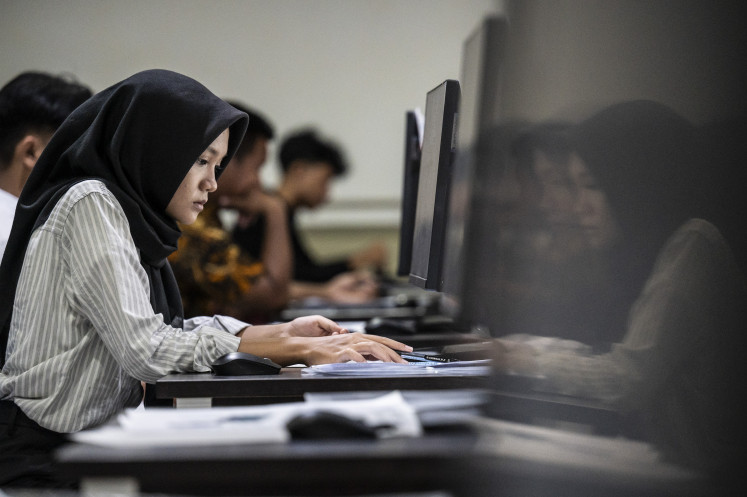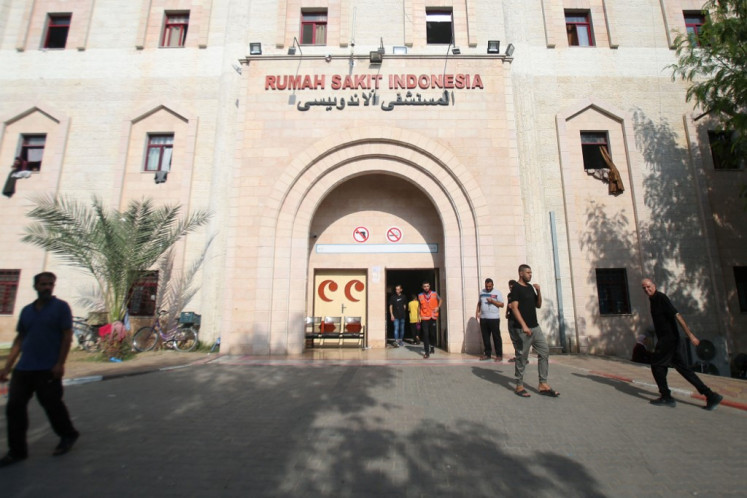Popular Reads
Top Results
Can't find what you're looking for?
View all search resultsPopular Reads
Top Results
Can't find what you're looking for?
View all search resultsHow innovation and culture can coexist in digital era
In our quest for digitalization, businesses and governments must work toward preserving these communities and their way of life.
Change text size
Gift Premium Articles
to Anyone
W
ith over 300 different languages and 1,300 distinct ethnic groups spanning from Sumatra to Papua, Indonesia boasts a rich and diverse cultural heritage that is unique to this archipelago. This cultural DNA not only drives Indonesia’s economy, but also forms the backbone of Indonesians’ sense of identity and daily lives.
Unfortunately, the intricacies of this cultural DNA also means that many ethnic and indigenous groups are not adequately empowered. According to the UNDP, some 28 million people still live below the poverty line — and while the total number of Indonesians living below the poverty line fell — income inequality rates in the country have increased by 24 percent between 2002 to 2013.
The recent World Creativity and Innovation Day serves as a reminder for companies and governments to do more for the sustainable development of all members of society. Leveraged correctly, I believe technology can be a great equalizer that dramatically improves quality of life while preserving cultural heritage. But, doing this is easier said than done, and requires a thoughtful, nuanced approach.
As a young student, I vividly remember hanging out at the warung (streetside store), sharing a soda gembira (soda with syrup and milk) with my friends. Sitting there surrounded by friends and listening to the ibu (ladies) and bapak (gentlemen) bustling around are amongst my fondest memories growing up.
These local “mom-and-pop” stores or warungs represent about 80 percent of Indonesia’s US$300 billion retail industry. Beyond being an important economic pillar, warungs are a ubiquitous part of Indonesians’ day-to-day lives, and with 4 million of them spread across the nation—it is not a stretch to say they provide a collective sense of community and remain an integral part of the nation’s fabric.
Ask any Indonesian, and they’ll tell you—warungs are central to communities, where Indonesians from all walks of life and economic backgrounds not only gather for their daily needs, but also to share experiences, news and life updates. And, by extension, warung owners have become familiar figures that unite communities together in a time when the world is becoming more fragmented.
This familiarity with warungs has also given me deeper insight into their challenges and the growing need for digital solutions to overcome these. However, in our quest for digitalization, businesses and governments must work toward preserving these communities and their way of life. We can, for example, provide access to working capital for traditional retailers, because selling goods to customers on credit is an important part of the warung culture—and this mutual trust is only possible because of the community they are a part of.
In many parts of the world, we’ve seen that technological advancements and innovation happens at the cost of culture erosion. To strike a balance of innovation and cultural preservation, it is crucial to involve governments, entities and people.
One concrete and relatable example is Singapore’s digital advancement of its hawkers. As part of the Hawkers Go Digital initiative, representatives from the government and its digital ambassadors held in-depth sessions with stallholders to assist them with their unique challenges and goals. And, the move paid off - since its launch in June 2020, the Hawkers Go Digital initiative has enabled more than half of Singapore’s stallholders to adopt e-payments, with transactions growing four-fold.
It is convenient to overlook culture in the pursuit for rapid globalization and technological advancement. The rise of e-commerce giants in Indonesia means that they can enjoy economies of scale and provide consumers the best prices and the widest range of goods—often at the cost of warungs.
Remember, the use of technology does not have to lead to radical changes. To ensure that rapid advancement does not overlook certain communities, we should focus on bridging gaps and creating incremental change. This means providing a simple digital solution that complements and streamlines the supply chain of warungs rather than drastically altering the way they do business.
By providing a wider selection of goods, transparent prices and reliable doorstep delivery through a few clicks, we empower retailers to remain competitive in this digitalized world. More tellingly, it has enabled a traditionally underserved segment to be part of the digital transformation that Southeast Asia is going through.
***
The writer is cofounder and CCO at Ula.










